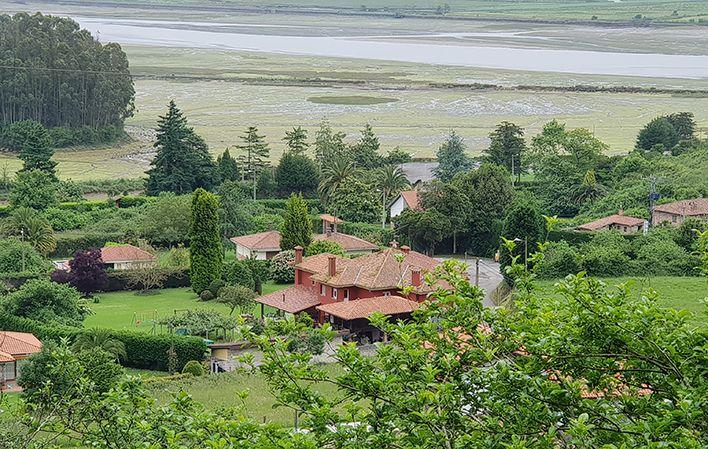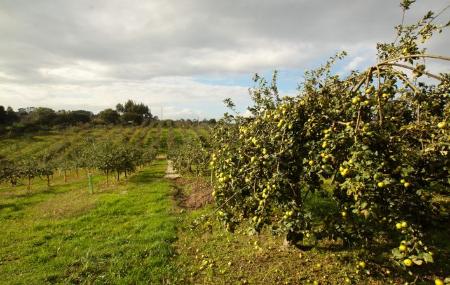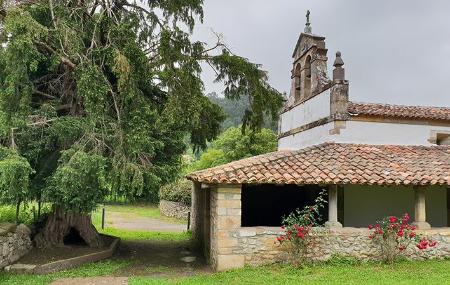
Charles V Route
- Address Villaviciosa Eastern Asturias
- Distance Distance: 11,3 kms
- Difficulty Difficulty: Short
- Altitude Altitude: 160 m.
- Unevenness Unevenness: 163 m.
-
On foot
On foot:
2 h. 50 min.
One way
- Start point Start point: Tazones or Villaviciosa
- Route type Route type: Hiking
- Tour type Tour type: Round trip
- Layout of the route Layout of the route: Download kml, Download gpx
Info
Five centuries ago, Charles V's arrival in Spain marked a turning point in history, and his encounter with the country he was to rule took place in Tazones, a small village on the Asturian coast where at first they thought the landing was an attack on the town. From here the emperor travelled to Villaviciosa, to the palace of the Hevia family, to spend his first night.
Between the two towns there is a route of just over eleven kilometres in which the Villaviciosa estuary dominates everything, its own land and that which mankind tried to win over and which the estuary once again claims for its own. This route combines history, ethnography and nature. Here, as well as apples everywhere and its best-known product, cider, we can see one of the few remaining tidal mills and the Villaviciosa estuary, which is undoubtedly the best Asturian wetland due to the variety of birds we see there every year.
Route
Tazones / Villaviciosa 11.3
This historic route begins in the village of Tazones, where five centuries ago Charles V, the future King of Spain, disembarked from Flanders and later travelled to Villaviciosa to rest for a few days.
About 60 metres from the port, we find the Hotel Imperial, and next to it an information panel that explains everything about the route: history, planimetry, maps... Furthermore, this route is very well signposted: it has plaques, small wooden posts and route markings in paint, which guarantees that it is impossible to get lost. We leave this panel behind us and proceed along the cobbled path marked by the blue plaques.
A little further on, about 130 metres further on, we turn left, continuing along the path between the houses of the beautiful village. We will reach a paved path with wooden handrails, also marked with a wooden signpost; we will ascend along it passing between trees, such as the lesser elm, and a well-known restaurant in the area.
After 700 metres, we come to a junction with the VV5 road, which we cross with caution, as indicated by the signs, to continue the route along the path opposite. A few metres further on, we see a turning to the right, but we continue on our way.
After the first kilometre, we turn off to the right and continue along the path until we reach the village of Lliñeru/Liñero, ignoring the detours that will appear.After 1.2 kilometres, kilometre 2.2, we reach Lliñeru/Liñero, where we take the branch to the right and continue straight on, without turning off at any point, until we have gone another kilometre or so, where the path forks and we turn left to reach the next village, Samartín/San Martín del Mar. There are two forks to the left, but we continue on our way.
At kilometre 4.3, we are already in Samartín/San Martín del Mar, from where we can see the beautiful Villaviciosa estuary, a partial nature reserve that serves as a refuge and rest area for migratory birds; the porreos, land reclaimed from the marsh by the construction of dykes, mainly for agricultural and livestock use, and the Encienona tidal mill, built in 1880, which used the ebb and flow of the sea water to move its millstones and grind flour.
Some 200 metres further on, still in Samartín/San Martín de Mar, we have the opportunity to visit its church and, next to it, its 18th century yew tree; all we have to do is follow the indications on the sign at the crossroads. We continue on our way to the right.
Approximately 6.2 kilometres further on, we come to a beautiful waterfall, also signposted and until now almost unknown, which is located in the Molinos stream. It has an important population of Woodwardia radicans, commonly known as píjara, a tropical fern that appears in the regional catalogue of endangered species of the flora of the Principality of Asturias and which only has 23 known populations, one of them in the village where this route starts, Tazones.
A few metres further on we again come to a dangerous junction with the AS256 road, along which we shall continue for about 200 metres until we come to another road to the right, which we shall take to reach the next village.
Once in Bedriñana, at kilometre 8.4, we come to a crossroads in the middle of the village; we take the path that continues straight ahead to leave it, but not before visiting the church of San Andrés de Bedriñana, to our right, declared a National Monument in 1931 and included in the prestigious list of pre-Romanesque churches in the Asturian region.
We continue along our path without turning off until we reach kilometre 10, where it joins the AS256 road again, so we must be careful, until we reach Villaviciosa, the end point of our route.
A kilometre and a few metres further on, we find ourselves in Villaviciosa, from where we can also start the route. In this beautiful village we find the church of Santa María de la Oliva, a Romanesque temple with elements of transition to Gothic, declared a National Monument in 1931; and the mansion of the Hevia family, which in 1517 was visited by the illustrious Charles V of Germany, who came to the Peninsula from Flanders to become Charles I of Spain, hence its historical and artistic value.
Map
Suitable for MTB




